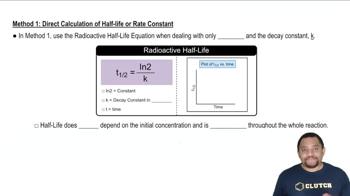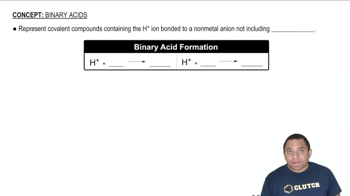Here are the essential concepts you must grasp in order to answer the question correctly.
Half-Reaction Method
The half-reaction method is a technique used to balance redox reactions by separating the oxidation and reduction processes. Each half-reaction is balanced for mass and charge, allowing for a clearer understanding of electron transfer. This method is particularly useful in acidic or basic solutions, where additional steps may be required to account for protons (H+) and hydroxide ions (OH-).
Recommended video:
Method 1 of Radioactive Half-Life
Oxidation States
Oxidation states (or numbers) are a way to keep track of electrons in chemical reactions, particularly in redox processes. They indicate the degree of oxidation of an atom in a compound, helping to identify which species are oxidized and reduced. Understanding oxidation states is crucial for balancing half-reactions, as it allows for the determination of electron transfer during the reaction.
Recommended video:
Acidic Medium
An acidic medium refers to a solution where the concentration of hydrogen ions (H+) is higher than that of hydroxide ions (OH-). In balancing half-reactions in acidic conditions, H+ ions and water (H2O) are often added to balance the equation. Recognizing the environment of the reaction is essential, as it influences the species involved and the balancing process.
Recommended video:
 Verified step by step guidance
Verified step by step guidance


